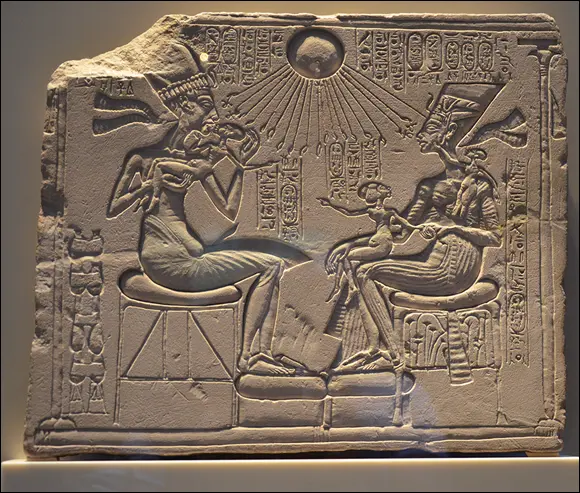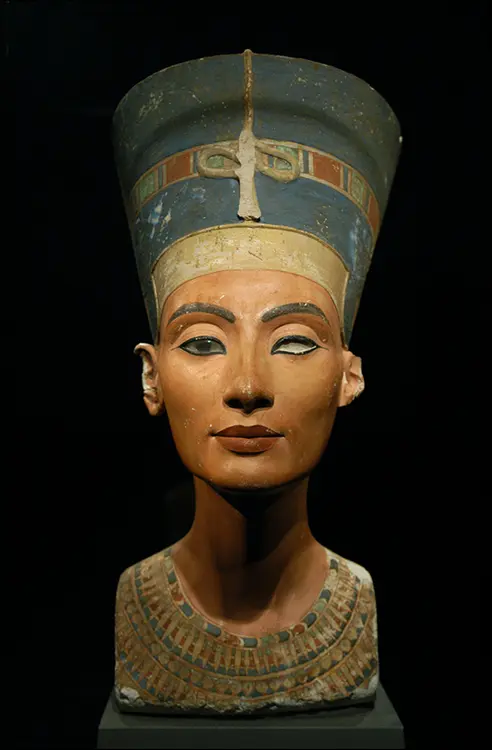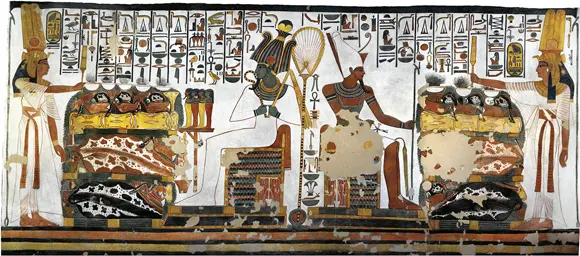Jesse Bryant Wilder - Art History For Dummies
Здесь есть возможность читать онлайн «Jesse Bryant Wilder - Art History For Dummies» — ознакомительный отрывок электронной книги совершенно бесплатно, а после прочтения отрывка купить полную версию. В некоторых случаях можно слушать аудио, скачать через торрент в формате fb2 и присутствует краткое содержание. Жанр: unrecognised, на английском языке. Описание произведения, (предисловие) а так же отзывы посетителей доступны на портале библиотеки ЛибКат.
- Название:Art History For Dummies
- Автор:
- Жанр:
- Год:неизвестен
- ISBN:нет данных
- Рейтинг книги:3 / 5. Голосов: 1
-
Избранное:Добавить в избранное
- Отзывы:
-
Ваша оценка:
- 60
- 1
- 2
- 3
- 4
- 5
Art History For Dummies: краткое содержание, описание и аннотация
Предлагаем к чтению аннотацию, описание, краткое содержание или предисловие (зависит от того, что написал сам автор книги «Art History For Dummies»). Если вы не нашли необходимую информацию о книге — напишите в комментариях, мы постараемся отыскать её.
Art History For Dummies
Art History For Dummies
Art History For Dummies
Art History For Dummies — читать онлайн ознакомительный отрывок
Ниже представлен текст книги, разбитый по страницам. Система сохранения места последней прочитанной страницы, позволяет с удобством читать онлайн бесплатно книгу «Art History For Dummies», без необходимости каждый раз заново искать на чём Вы остановились. Поставьте закладку, и сможете в любой момент перейти на страницу, на которой закончили чтение.
Интервал:
Закладка:
 Akhenaten ordered that open-air temples be built to celebrate the light and love of the sun god in a more natural setting. Honesty was of central importance in the new religion, so artists had to depict people, including the pharaoh, more honestly — in other words, in everyday situations with all their flaws. The statue of Akhenaten in the Egyptian Museum in Cairo, for example, reveals his pot belly!
Akhenaten ordered that open-air temples be built to celebrate the light and love of the sun god in a more natural setting. Honesty was of central importance in the new religion, so artists had to depict people, including the pharaoh, more honestly — in other words, in everyday situations with all their flaws. The statue of Akhenaten in the Egyptian Museum in Cairo, for example, reveals his pot belly!
One of the best examples of the Amarna style is the family portrait of Akhenaten, his queen Nefertiti, and their three young daughters (see Figure 6-3).

D.serra1 / Shutterstock
FIGURE 6-3: Akhenaten’s family portrait brings the royal family down to earth while linking them to the god Aten.
This family portrait suggests that belief in one god seems to have encouraged more humanity, including
A close family: The youngest princess, who is still an infant, plays with her mother’s earring. Akhenaten tousles the hair of the princess in his arms while she points to the ankh (symbol of life) at the tip of a sun ray. The other princess holds Nefertiti’s hand and points toward her father, which helps to interlink the family. Depicting intimacy between parents and children was new in Egyptian art.
A balanced relationship: The sun disk (representing Aten) in the relief spreads its rays equally on the king and queen, suggesting that they are co-rulers governing a balanced kingdom under one god.
 This portrait of Akhenaten’s family is a sunken relief. The artist incises the image into the stone rather than cutting out the background, as in raised relief.
This portrait of Akhenaten’s family is a sunken relief. The artist incises the image into the stone rather than cutting out the background, as in raised relief.
The painted bust of Akhenaten’s queen Nefertiti, shown in Figure 6-4, is the most famous female bust in Egyptian art. Her magnificent jewelry (typical of the Amarna period, in which exquisite jewelry flourished) echoes the color pattern of the band in her headdress. The queen is both idealized (the epitome of grace and elegance) and realistic — note the realism in her high cheekbones, mouth, and chin. Her rounded shoulders and forward-leaning neck highlight her perfection and humanity. Her name means “the beauty that has come.”
Raiding King Tut’s tomb treasures
Akhenaten’s monotheistic experiment (only one god — Aten!) didn’t survive him. When his 9-year-old son, pharaoh Tutankhaten (which means “living image of Aten”), came to the throne, his vizier (chief minister) Ay, an old-school Amun priest, forced the boy to change his name to Tutankhamun, which means “living image of Amun.”
 With this name change, the old religion was now back on track. Tutankhamun moved the capital back to Thebes and ordered many of Akhenaten’s outdoor temples and other innovations to be destroyed. Tutankhamun’s own death mask, made only nine years later (see Figure 6-5), shows that most of the old formality and rigidity made a comeback after Akhenaten’s death.
With this name change, the old religion was now back on track. Tutankhamun moved the capital back to Thebes and ordered many of Akhenaten’s outdoor temples and other innovations to be destroyed. Tutankhamun’s own death mask, made only nine years later (see Figure 6-5), shows that most of the old formality and rigidity made a comeback after Akhenaten’s death.
Tutankhamun is the only pharaoh with a nickname. He has been known as King Tut ever since Howard Carter discovered his intact tomb in 1922. Tut’s was the only king’s tomb that hadn’t been ransacked by grave robbers. It revealed the full cornucopia of Egyptian wealth and splendor and included a golden throne, four golden chariots, precious jewels, a casket of pure gold, statues of gold and ebony, and on and on. You can see why grave robbing was big business in Ancient Egypt!

Vladimir Wrangel / Shutterstock
FIGURE 6-4: Queen Nefertiti’s bust denotes both the real and the ideal.

Boltin Picture Library / Bridgeman Images
FIGURE 6-5: The funerary mask of Tutankhamun is made of gold inlaid with semiprecious stones and glass.
MUMMY SLAVES
Pharaohs were also buried with mummy slaves called ushabtis, which were simply statuettes. Their job was to perform work details such as brewing beer or baking bread so that the pharaoh could lead an afterlife of leisure. The ushabtis even had a script: “If the deceased is summoned to do forced labor, ‘I will do it, here am I!’”
Mummy armies also accompanied New Kingdom pharaohs in case they ran into any underworld enemies in the hereafter. (These mummy armies may have been the inspiration for the powerful skeletal soldiers in the more recent mummy movies The Mummy and The Mummy Returns. )
Admiring the world’s most beautiful dead woman’s tomb
Tombs weren’t simply covered with hieroglyphic spells. They were also elaborately painted, some with depictions of daily life that the dead could observe, but no longer participate in. The most common images were those of gods protecting the deceased. The most elaborate surviving tomb is that of Nefertari, Rameses II’s favorite wife (he had half a dozen wives, as well as countless concubines) in the Valley of the Queens. In vibrant colors, Gods escort the lovely Nefertari on her journey through the afterlife. (See Figure 6-6.) On the left, Nefertari holds the sekhem scepter as an offering to Osiris seated behind the four sons of Horus. On the right, she raises the scepter to Atum. The tomb also features a creation myth and stories of resurrection.

NPL - DeA Picture Library / Bridgeman Images
FIGURE 6-6: Detail from Nefertari’s tomb, located in the Valley of the Queens.
Decoding Books of the Dead
In the Old Kingdom, pyramid texts, used to resurrect pharaohs, were inscribed on pyramid walls. They included resurrection spells, charms, passwords, and prayers. During the New Kingdom, similar spells were published in papyrus scrolls called Books of the Dead, which were readily available. Now anyone who could read was resurrectable.
But New Kingdom resurrection came with a hitch. The books weren’t cheap, and you had to be good to be resurrected. Although Books of the Dead were individualized for the owner, they all include a goodness test called the weighing of the heart (see Hu-Nefer’s Book of the Dead in Figure 6-7 — Hu-Nefer was a royal scribe who lived during the 19th dynasty).

The Weighing of the Heart against Maat's Feather of Truth, from the Book of the Dead of the Royal Scribe Hunefer, New Kingdom, c.1275 BC (papyrus)/Egyptian 19th Dynasty (c.1292-1187 BC)/British Museum, London, UK/Bridgeman Images
FIGURE 6-7: This narrative scene from the Book of the Dead illustrates the weighing-of-the-heart ritual, the Egyptian version of the Last Judgment.
Читать дальшеИнтервал:
Закладка:
Похожие книги на «Art History For Dummies»
Представляем Вашему вниманию похожие книги на «Art History For Dummies» списком для выбора. Мы отобрали схожую по названию и смыслу литературу в надежде предоставить читателям больше вариантов отыскать новые, интересные, ещё непрочитанные произведения.
Обсуждение, отзывы о книге «Art History For Dummies» и просто собственные мнения читателей. Оставьте ваши комментарии, напишите, что Вы думаете о произведении, его смысле или главных героях. Укажите что конкретно понравилось, а что нет, и почему Вы так считаете.












